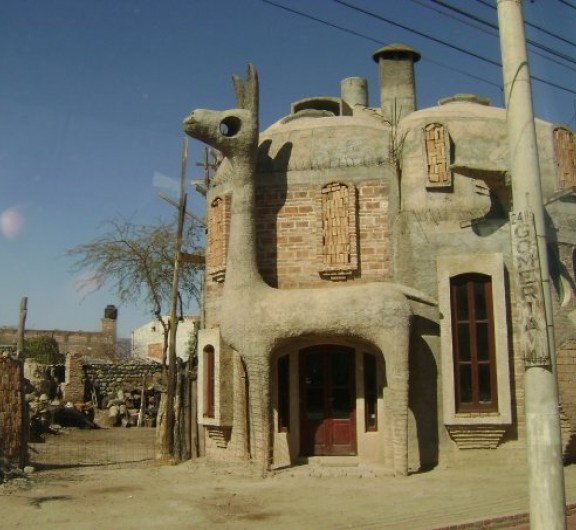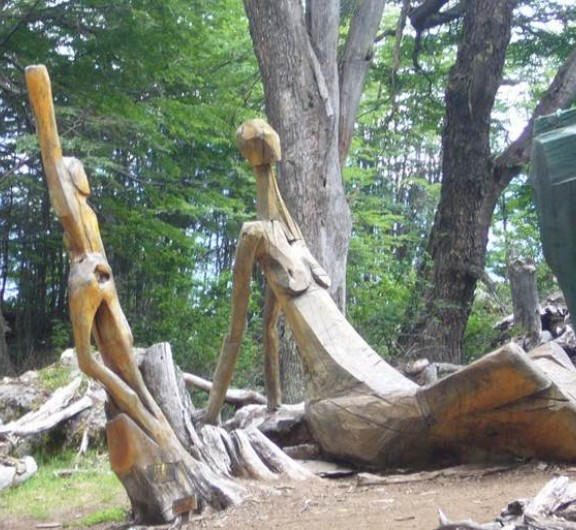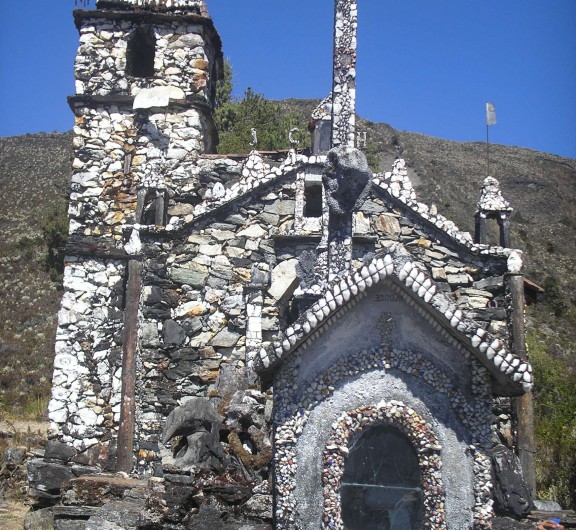La Casa Ecológica de Botellas (The Ecological Bottle House)Alfredo Alberto Santa Cruz
About the Artist/Site
In the beginning of the 2000s, Argentina suffered a major economic crisis, and many people were forced out of work, obliged to make a living as best they could. Many became cartoneros, those who scavenged old paper, boxes, and other recyclables in order to sell them; this obviously was not a lucrative business, but Alfredo Santa Cruz, one of many, seized this opportunity to earn enough money to help his family get by.
The situation came to a head when his daughter pleaded with him for a doll house as a Christmas present. Knowing that he couldn’t afford to buy one, he decided to build one. And with no materials available except those he collected to resell, he decided to build the doll house out of the ubiquitous 1.5 and two-liter plastic soft drink bottles found all over city streets and rural areas alike. By inserting bottles inside each other, he developed an innovative brick-like building block element that allowed for ease in construction.
Concerned that the plastic – flammable, although not as flammable as wood – might be susceptible to fire, he fills each bottle either with water (for those areas where he would like the light to penetrate to the interior) or dirt (for those areas in which greater privacy is desired, or for garden walls and walkway steps); should the bottles catch fire, the plastic would wrinkle and shrink, releasing the contents and tamping down the fire. His favored soda bottles are generally thicker than other kinds of plastic bottles, and they also have a solar filter, added by the bottling companies to protect the drinks; this, plus the general indestructability of plastic, ensures significant longevity for the structures. Tetra Pak boxboard and aluminum cans have also been included as building components – they are opened and flattened, and primarily serve as roof shingles, metal side up to reflect the sun and maintain constant temperatures within the house. Compact disc boxes form most of the doors and windows, and the curtains are made from bottle tops.
Learning by doing, Santa Cruz built other houses on his property; he has been working on a much more expansive house that will require 24,000 bottles. He has even begun to travel to teach other people in poverty-stricken areas of South America how to build; for example, in the Paraguayan city of Concepción, he worked with students to create a fifty square meter (538 square feet) house out of the more than 18,000 bottles they had collected in advance. In addition to the buildings themselves, he also has created furniture and “mattresses” made of plastic bottles, for in most of these areas, people would sleep on the ground inside their huts, a health and public sanitation issue.
Santa Cruz has become an ecological evangelist, passionate about recycling and how it can help the planet at the same time that it provides low-cost housing simply for the work of gathering and stacking the bottles. The Ecological House of Bottles has been declared a site of “municipal interest” by the City Council of Puerto Iguazo, and Santa Cruz has converted his home into a museum in order to enhance its educational potential. It is open for tours and he is happy to show visitors his constructions; as his house is located close to the Iguazu Falls National Park, just off the main highway, it is easily accessible.
~Jo Farb Hernández, 2018
Contributors
Map & Site Information
Puerto Iguazu Misiones, Misiónes, 3370
ar
Latitude/Longitude: -25.5971635 / -54.578599
Extant
Puerto Iguazu Misiones, Misiónes, 3370, Argentina
The site is open for tours and he is happy to show visitors his constructions; as his house is located close to the Iguazu Falls National Park, just off the main highway, it is easily accessible. The address is: Barrio Las Horquideas, Manzana B, Lote 7 (Las Horquideas neighborhood, Block B, Lot 7), Puerto Iguazú, Misiones 3370, Argentina
Nearby Environments







Post your comment
Comments
No one has commented on this page yet.